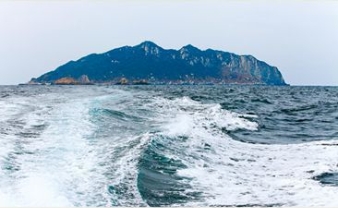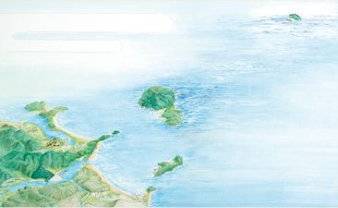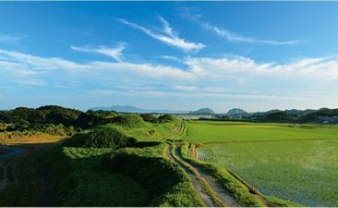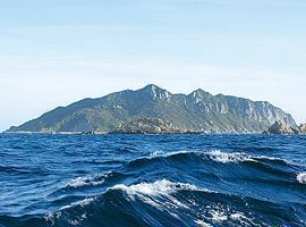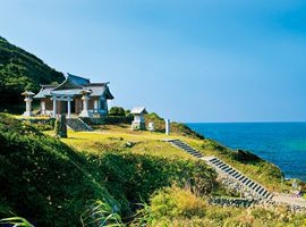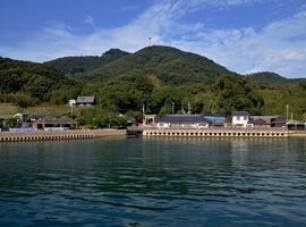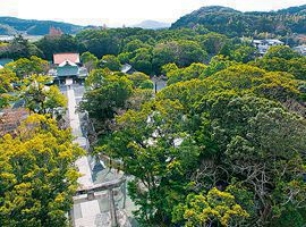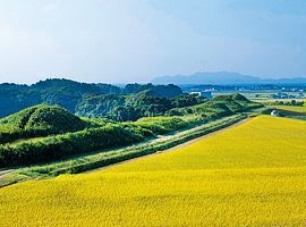- 【As World Heritage】
-
Ancient Rituals on Okinoshima|
A Legacy of Faith in the Three Female Deities|
To preserve this World Heritage Site for future generations - 【Component Sites】
-
Okinoshima (Okitsu-miya, Munakata Taisha)|
Okitsu-miya Yohaisho, Munakata Taisha|
Nakatsu-miya, Munakata Taisha| Hetsu-miya, Munakata Taisha| Shimbaru-Nuyama Mounded Tomb Group - 【Others】
- Efforts toward Inscription| Publications| Panoramic Landscape Viewer
This Property is an exceptional example of cultural tradition of worshipping a sacred island, as it has evolved amidst a process of dynamic oveaseas exchange in East Asia and as it has been passed down to the present day.
The island of Okinoshima, which is located approximately 60 kilometres from the main island of Kyushu, as well as its associated sites on Kyushu and Oshima, are exceptional examples of the cultural tradition of worshipping a sacred island as it has evolved and been passed down to the present day.
Ancient ritual sites linked to prayers for maritime safety remain on Okinoshima today, dating from the second half of the fourth century to the late ninth century. These rituals developed at the same time that active exchanges that were occurring among the Japanese archipelago, Korean peninsula, and Chinese mainland.
The ancient Munakata clan worshipped the kami that dwelled on Okinoshima, and their faith later led to the worship of the three female kami of Munakata. Okinoshima forms one part of Munakata Taisha, which enshrines the three female kami of Munakata. This sacred tradition has been passed down to the present day, including its taboos and the practice of worshipping the island from afar.
Criteria(ⅱ)
Exhibits an important interchange of human values, over a span of time or within a cultural area of the world, on developments in architecture or technology, monumental arts, town-planning or landscape design.
The sacred island of Okinoshima exhibits important interchanges and exchanges amongst various polities in East Asia from the fourth to the ninth centuries, which is evident from the abundance of objects discovered from a variety of origins deposited at sites on the island where rituals for safe navigation were performed. The changes in object distribution and site organisation attest to changes in the rituals, which in turn reflect the nature of the process of dynamic exchange that was taking place during that period, when polities based on the Chinese mainland, the Korean peninsula and the Japanese archipelago were developing a sense of identity that substantially contributed to the formation of Japanese culture.
Criteria(ⅲ)
Bears a unique or at least exceptional testimony to a cultural tradition or to a civilization which is living or which has disappeared.
Okinoshima is an exceptional example of the cultural tradition of worshipping a sacred island, as it has evolved and been passed down from ancient times to the present.
Remarkably, archaeological sites have been preserved on the island virtually intact, and provide a chronological record of how the rituals performed there changed over a period of some five hundred years. The worship of the island continued in the form of devotion to the Three Female Deities of Munakata at the three shrines of Munakata Taisha—Okitsu-miya on Okinoshima, Nakatsu-miya on Oshima, and Hetsu-miya on Kyushu—in addition to the veneration of the island itself from afar.
A World Heritage Site is a place listed by the United Nations Educational, Scientific and Cultural Organization (UNESCO), that is considered to be of outstanding universal value to humanity, based on the World Heritage Convention. The World Heritage List consists of cultural, natural, and mixed properties.
The World Heritage Committee decides whether a property meets the criteria necessary for it to be inscribed on the list.
The Sacred Island of Okinoshima and Associated Sites in the Munakata Region have inscrbed on the List in July, 2017 according to the two criteria described above.。
To preserve this World
Heritage Site to future
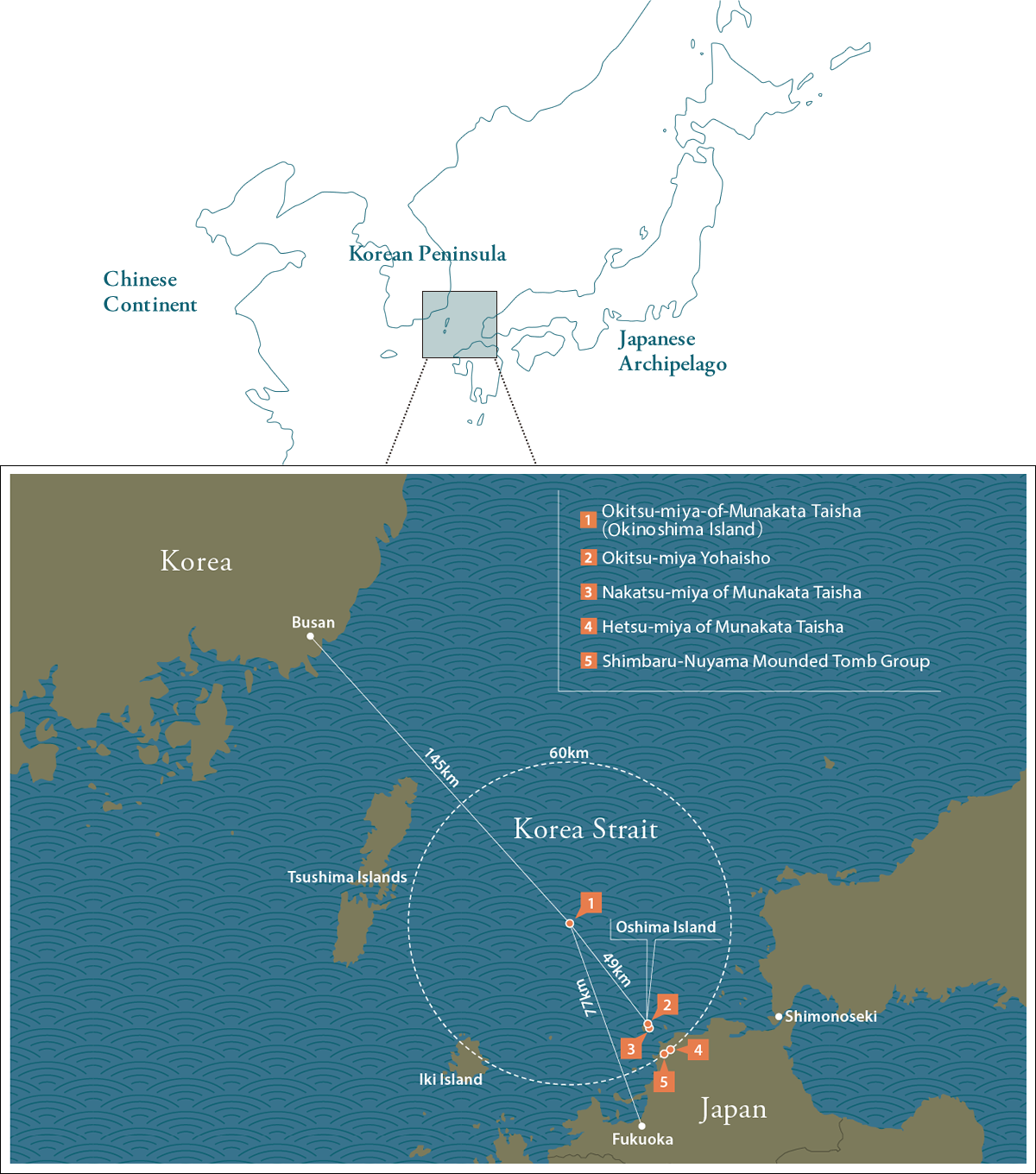
Panoramic Landscape Viewer
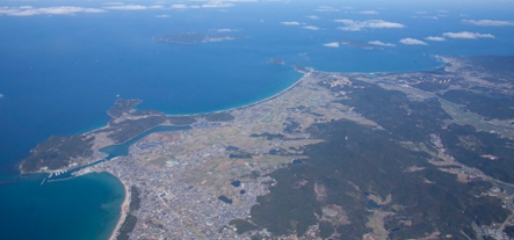
The 360-degree panoramic views from Oshima Island take in the sky above the mainland and Mt. Mitake Observatory. Access to cultural properties in the surrounding area and tourist information are readily available.
Publications
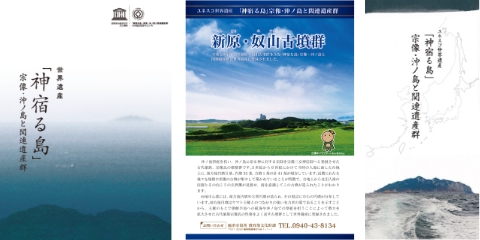
The committee distributes a variety of publications and research reports.
Efforts toward Inscription
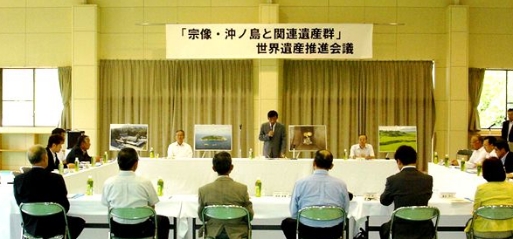
Introduces the process of World Heritage registration.


